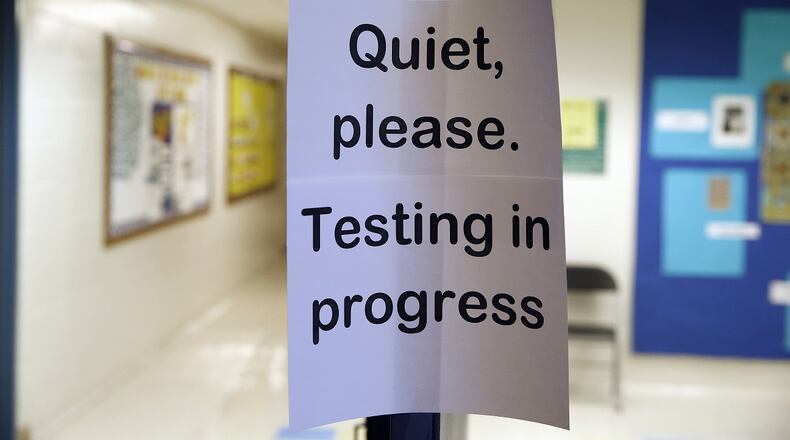Students took their mandatory Georgia Milestones tests before going home for the summer, and the public won’t hear the results for a while.
But when the scores are released, the outcome shouldn’t be a surprise. A new analysis shows that the best predictors of the scores are things we already know: race and ethnicity and the correlation with wealth, poverty and related social factors.
In the language of statisticians, household income “explains” 68 percent of the variation in racial and ethnic group scores from the standardized state tests last year, according to the analysis by Jarod Apperson, a Ph.D. candidate in economics who teaches at Spelman College.
In April, he shared his research showing a similar correlation between the household income of Atlanta students and their latest scores on the National Assessment of Educational Progress. Atlanta had one of the largest racial test-performance gaps of any city, and Apperson's analysis revealed that Atlanta also had the biggest race-based income gap.
Without the household income information, Apperson said at the time, the scores are misleading: “You’re really just putting out these numbers that people take to mean something that they really don’t mean.”
The public and politicians tend to blame teachers and schools for poor scores, but the data strongly suggest that factors beyond a school's control are affecting the outcome. That's why Georgia eventually applies what's called a "growth" model, which shows how the performance of students with similar scores at the end of one year changes over the next year. The model helps isolate the effect of the schools, but comes months after the release of the Milestones and doesn't contain the demographic nuance that Apperson's analysis reveals.
He used survey data from the U.S. Census Bureau compiled by researchers at Stanford University and organized around school district boundaries. The numbers offer a unique window into the typically invisible forces behind school scores.
Now, Apperson has applied the contextual data to the 2017 Georgia Milestones scores for third through eighth grade. Users who check his data tool online can review the results for individual school districts, and will find that black and Hispanic students tend to live in families with a higher percentage of single moms, who are renting or are getting government food assistance. White students have a higher percentage of parents in professional occupations or with bachelor's or advanced degrees.
Whites generally did much better on the tests.
Take DeKalb County, where black and Hispanic students were, on average, at least a full grade level behind, while whites were nearly two grade levels ahead.
The median family income for white DeKalb students was nearly $109,000 while blacks were taking home just over $43,000 and Hispanics $33,000. (Stanford’s data is about a decade old, but Apperson believes the information is still representative.)
There was a strong racial and ethnic gap among related factors, with 17 percent of white student households in DeKalb led by single moms compared with 51 percent of black households and 34 percent of Hispanic households. Sixteen percent of whites were renters while the percentage was 30 points higher for blacks and 60 points higher for Hispanics. The proportion of black households receiving food assistance was five times higher than for whites; for Hispanics, it was twice as high as for whites.
On the flip side, 69 percent of white DeKalb students were parented by professionals compared with 33 percent of blacks and 14 percent of Hispanics. The proportion of households with bachelor’s degrees or better was similarly skewed.
Overall, black students, the state’s largest enrolled minority at 37 percent, are performing well below whites, who make up 39 percent of public school attendance. The social factors appear to explain a lot of that, but there may also be unseen influences, Apperson said.
“It might be differences in school quality,” he said. “It could also be discrimination or bias in the tests.”
Even after all the characteristics in Apperson’s analysis are taken into account, “There could also be things we don’t observe that make a difference,” he said.
That's why, when the Georgia Department of Education releases the Milestones scores, parents should hold their breath until the agency crunches them into the growth scores that will be released later in the year with the state schools report card known as the College and Career Ready Performance Index.
About the Author
Keep Reading
The Latest
Featured



